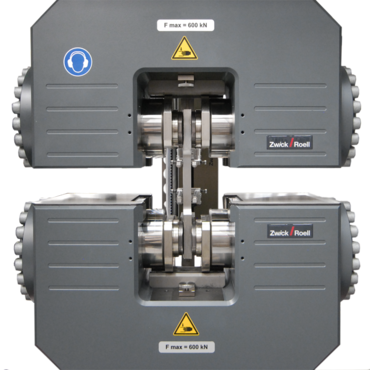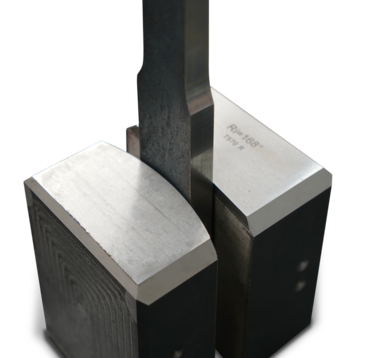Tensile Test on Metal Tubes or Tube Sections
The tensile test on tubes and tube sections is performed according to ISO 6892. The test is used to determine characteristic values such as tensile strength, yield point, offset yield, and strain at break.
The diameter of the tube is decisive of how the tensile test is performed in detail. For tubes with smaller diameters, the tensile test can be performed on the entire tube. For larger tube diameters, it is common to take a strip of tube to use as a standardized flat specimen.
Smaller outside diameter Larger inside diameter Testing systems
Tensile test on tubes with a smaller outer diameter
Tubes with an outside diameter significantly smaller than 100 mm can be clamped at the ends with specimen grips. The end of the tube is compressed and clamped in the same manner as a flat specimen.
For larger tube diameters, the tube is reinforced on the inside with a plug . This prevents pre-damage due to crushing the tube when it is clamped by the specimen grips. The plug is cone-shaped so that it can be removed again after the tensile test.
Tensile test on tubes with a larger outer diameter
For larger tube diameters, a longitudinal tube strip is taken from the tube wall as a standardized specimen. Tube strip specimens (or tube section specimens) have a curvature on the inner and outer surface and in practice are usually clamped with flat jaw inserts. However, it should be noted that the tube strip specimen will be plastically deformed at the clamping point. To prevent plastic deformation, adapted jaw inserts can be used on the respective tube strip specimen.


ZwickRoell has the right testing equipment to support you
ZwickRoell not only provides tensile testing machines from 500 N to 2,500 kN, but also the respective specimen grips.
Tensile tests are primarily performed at room temperature. Depending on the application of the tube, it can also be tested at elevated temperatures. In addition to tensile tests to ISO 6892, creep tests (e.g. to DIN 50118) are relevant in which a constant weight force is applied to the specimen over a longer period of time.
